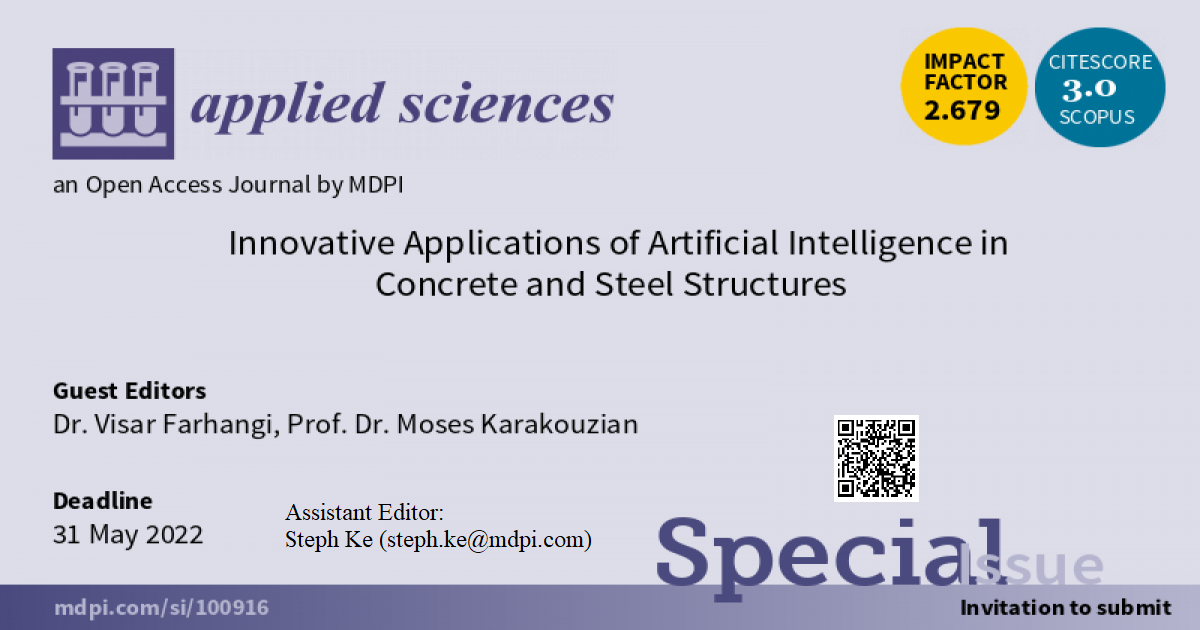Innovative Applications of Artificial Intelligence in Concrete and Steel Structures
A special issue of Applied Sciences (ISSN 2076-3417). This special issue belongs to the section "Civil Engineering".
Deadline for manuscript submissions: closed (31 May 2022) | Viewed by 3101

Special Issue Editors
Interests: geotechnical engineering, structural engineering, civil engineering; polymers; foundation; liquefaction; pile; deep foundation; finite element
Special Issues, Collections and Topics in MDPI journals
Interests: geotechnical engineering; construction materials; hydraulics
Special Issues, Collections and Topics in MDPI journals
Special Issue Information
Dear Colleagues,
Evaluating the response of concrete and steel structures requires a host of large-scale, in situ experimental investigations, which are time consuming and require the investment of considerable financial resources. Presently, the application of innovative methods such as the implementation of artificial intelligence has laid the groundwork for analyzing and evaluating the behavior of steel and concrete structures as a cost-effective solution in a relatively short period of time.
Accordingly, this Special Issue will cover novel studies on applications of artificial intelligence in civil engineering to predict the response of structures subjected to static and dynamic loads.
Dr. Visar Farhangi
Prof. Dr. Moses Karakouzian
Guest Editors
Manuscript Submission Information
Manuscripts should be submitted online at www.mdpi.com by registering and logging in to this website. Once you are registered, click here to go to the submission form. Manuscripts can be submitted until the deadline. All submissions that pass pre-check are peer-reviewed. Accepted papers will be published continuously in the journal (as soon as accepted) and will be listed together on the special issue website. Research articles, review articles as well as short communications are invited. For planned papers, a title and short abstract (about 100 words) can be sent to the Editorial Office for announcement on this website.
Submitted manuscripts should not have been published previously, nor be under consideration for publication elsewhere (except conference proceedings papers). All manuscripts are thoroughly refereed through a single-blind peer-review process. A guide for authors and other relevant information for submission of manuscripts is available on the Instructions for Authors page. Applied Sciences is an international peer-reviewed open access semimonthly journal published by MDPI.
Please visit the Instructions for Authors page before submitting a manuscript. The Article Processing Charge (APC) for publication in this open access journal is 2400 CHF (Swiss Francs). Submitted papers should be well formatted and use good English. Authors may use MDPI's English editing service prior to publication or during author revisions.





